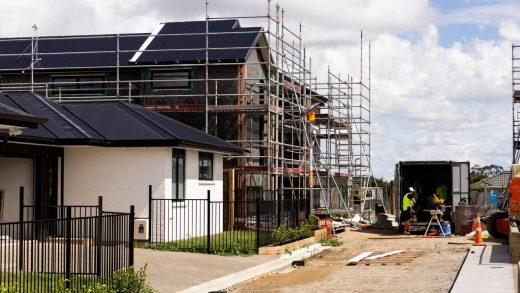
With modern vehicles blending segment borders more and more, it’s almost strange for a manufacturer to release something that looks somewhat normal. But then, the BMW 2 Series Active Tourer hasn’t ever really fit into any mould, despite its unassuming appearance.
It’s called a ‘2 Series’ but it’s nothing like the 2 Series Coupe, instead closer to a 1 Series in its bones. The Active Tourer part of the name is BMW-speak for people mover, but one smaller than the X1 crossover. Both the Active Tourer and 1 Series ride on the same UKL2 platform, also shared with the Mini Countryman.
It’s not an SUV sort of people mover either. It has a low floor and high ceiling for more interior space without any pretence of off-road readiness, which, considering it’s larger than the contemporary hatchback, really makes it a simple MPV. Well, that’s the closest I can get to categorising it in any case.
Nile Bijoux/Stuff
It’s a big hatchback, but not quite an SUV. An MPV, really.
Along with the platform, the 2AT has pulled a few styling aspects from the X1, like the big grille and the minimal interior. Somewhat disappointing is that the superb iDrive rotary controller has been deleted from the Active Tourer (mimicking the X1), meaning touching the screen is the only way to physically interact with the menus. You can use BMW’s voice assistant, but I generally prefer a more hands-on approach.
Another bummer is the lift-up piece of plastic that acts as a head-up display. The X1 has a proper windscreen-reflection set-up, so it’s unfortunate the 2 Series gets the old style of HUD when a better option is available.
Nile Bijoux/Stuff
New Zealand only gets the 225e plug-in hybrid, highly specified as standard.
The screens and operating system are the same as in other BMWs, which is to say they’re visually impressive, snappy, and filled with far too many menu icons. Like the X1, the wireless charging cradle is an upright stand with a little bar that holds your phone in place. Seems like a strange solution to a problem that never really existed, considering both Apple CarPlay and Android Auto are wirelessly available.
There aren’t any obvious shortcut buttons either, with a ‘My Modes’ button nestled next to the gear selector and a rather unhelpfully miscellaneous button showing a car and three lines. This one brings up the driving settings, which is how you go between electric power and hybrid, along with fiddling with driver assistance settings.
Interior space is plentiful, as you might expect, with up to 1455 litres of space available if you fold the rear seats, It’s comfy too – adults can fit in the second row easily. The quality of the cabin is right up with BMW’s standards too, with nice plastics and bits of metal trim contrasting with lots of leather.
Nile Bijoux/Stuff
BMW’s now-common dual-screen cabin is present, but gone is the rotary controller.
You get a lot of standard kit here, with adaptive LED headlights, a harmon/kardon stereo, roof rails, and seat adjustment for the rear seats all zero-cost options. In fact, the only things BMW asks extra for are sun protection glazing and the Shadowline exterior trim package which adds black gloss around the kidney grille.
The only model available in New Zealand at the moment is the 225e. It uses a 1.5-litre three-cylinder engine paired with a single electric motor, enough for 180kW/447Nm of combined output. The battery is a 16.3kWh lithium-ion unit, enough for a claimed range of 90km. I saw 80km after a few charges, which is great for a PHEV.
The electric motor sends power to the rear, but the entire powertrain can shuffle power to both ends if need be. It’s pretty grunty when in Sport mode and using electric and petrol power, while you won’t be left wanting for general city driving when only using the battery. The 2AT isn’t the most engaging of vehicles in the corners – the Countryman is better there – but it’s perfectly fine for what most people will do with it.
Nile Bijoux/Stuff
Nestled under the bonnet is a 1.5-litre triple, paired with an electric motor for all-wheel drive grip.
However, there’s still a fairly hefty question mark hanging over things. Where does this vehicle actually slot into BMW’s family? It’s kind of like an entry SUV, with decent boot space and a comfy ride. While it is indeed smaller than the X1, it’s more expensive if you compare it to the starting X1 sDrive18i (which isn’t a plug-in hybrid).
The 2AT also doesn’t have the extra ride height SUV buyers want, and the confusing infotainment system is made worse by a lack of easy shortcut buttons.
But comfort, practicality, standard kit and quality are both right up there, as is the electric range. Not to mention price – the next cheapest electrified BMW is the iX1 xDrive30 at $98,900 – although the iX2 eDrive20 is coming soon, which will be cheaper. Probably not quite the $78,500 of the 2AT but it’ll be close. There’s no Clean Car Discount to aim for now, so the iX2 might sit above the $80k mark.
It’ll take a bit to win over newcomers to BMW, what with the new Mini Countryman coming next year and an array of small, hatchback-based SUVs already available. But for those that are willing to give it a go, the Active Tourer does a good job of striking a balance between SUV, hatchback and MPV without losing any of the typical BMW quality.


